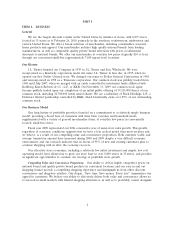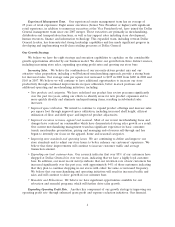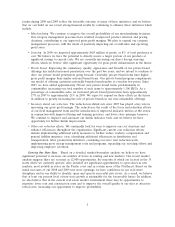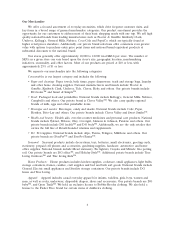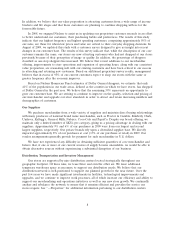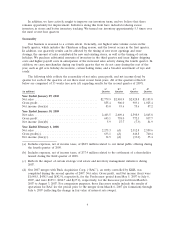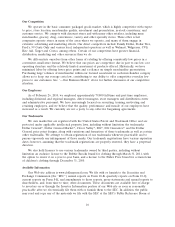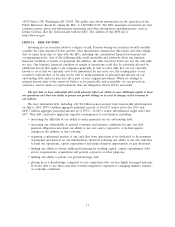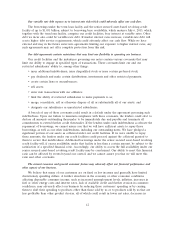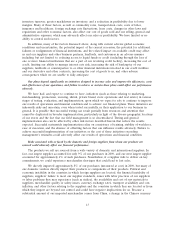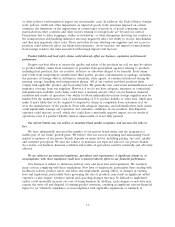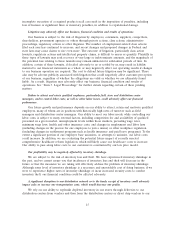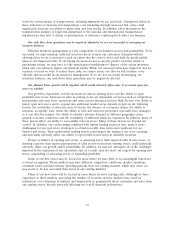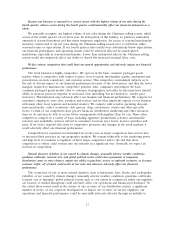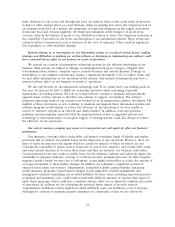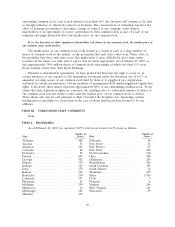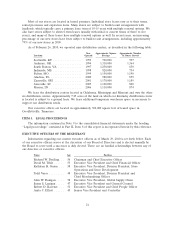Dollar General 2009 Annual Report Download - page 22
Download and view the complete annual report
Please find page 22 of the 2009 Dollar General annual report below. You can navigate through the pages in the report by either clicking on the pages listed below, or by using the keyword search tool below to find specific information within the annual report.100 F Street, NE, Washington DC 20549. The public may obtain information on the operation of the
Public Reference Room by calling the SEC at 1-800-SEC-0330. The SEC maintains an internet site that
contains reports, proxy and information statements and other information regarding issuers, such as
Dollar General, that file electronically with the SEC. The address of that Web site is
http://www.sec.gov.
ITEM 1A. RISK FACTORS
Investing in our securities involves a degree of risk. Persons buying our securities should carefully
consider the risks described below and the other information contained in this report and other filings
that we make from time to time with the SEC, including our consolidated financial statements and
accompanying notes. Any of the following risks could materially and adversely affect our business,
financial condition or results of operations. In addition, the risks described below are not the only risks
we face. Our business, financial condition or results of operations could also be adversely affected by
additional factors that apply to all companies generally, as well as other risks that are not currently
known to us or that we currently view to be immaterial. In any such case, the trading price of our
securities could decline or we may not be able to make payments of principal and interest on our
outstanding debt, and you may lose all or part of your original investment. While we attempt to
mitigate known risks to the extent we believe to be practicable and reasonable, we can provide no
assurance, and we make no representation, that our mitigation efforts will be successful.
The fact that we have substantial debt could adversely affect our ability to raise additional capital to fund
our operations and limit our ability to pursue our growth strategy or to react to changes in the economy or
our industry.
We have substantial debt, including a $1.964 billion senior secured term loan facility which matures
on July 6, 2014, $979.3 million aggregate principal amount of 10.625% senior notes due 2015 and
$450.7 million aggregate principal amount of 11.875% / 12.625% senior subordinated toggle notes due
2017. This debt could have important negative consequences to our business, including:
• increasing the difficulty of our ability to make payments on our outstanding debt;
• increasing our vulnerability to general economic and industry conditions because our debt
payment obligations may limit our ability to use our cash to respond to or defend against
changes in the industry or the economy;
• requiring a substantial portion of our cash flow from operations to be dedicated to the payment
of principal and interest on our indebtedness, therefore reducing our ability to use our cash flow
to fund our operations, capital expenditures and future business opportunities or pay dividends;
• limiting our ability to obtain additional financing for working capital, capital expenditures, debt
service requirements, acquisitions and general corporate or other purposes;
• limiting our ability to pursue our growth strategy; and
• placing us at a disadvantage compared to our competitors who are less highly leveraged and may
be better able to use their cash flow to fund competitive responses to changing industry, market
or economic conditions.
11



